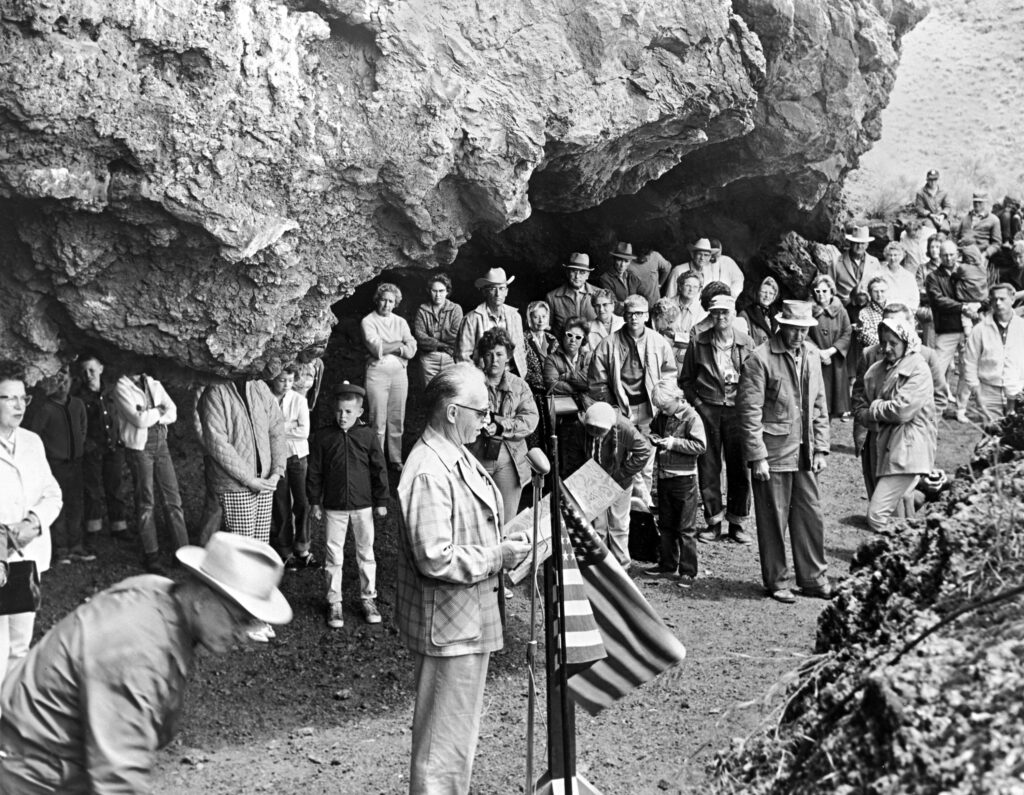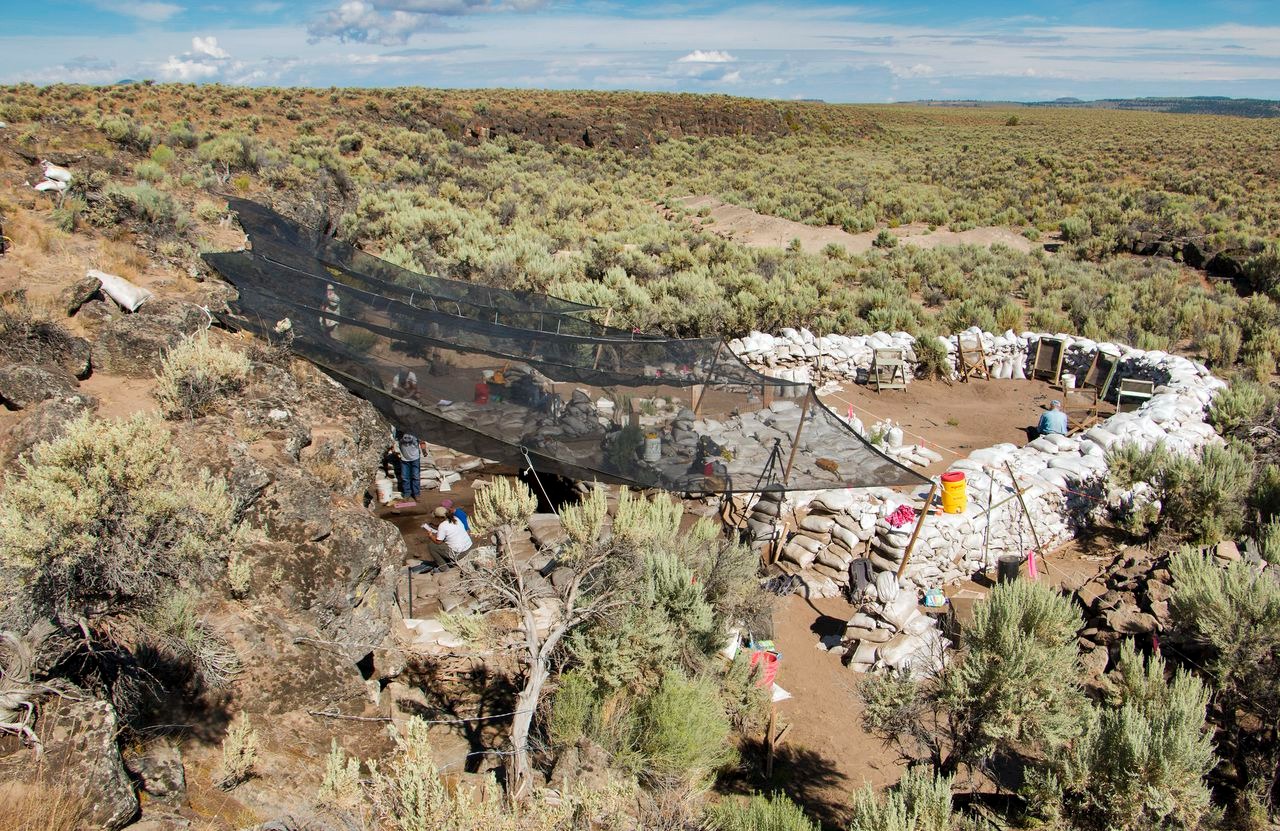In a remarkable breakthrough, researchers and students from the University of Oregon's Archaeological Field School have uncovered evidence suggesting that people called Oregon home a staggering 18,000 years ago. This mind-boggling revelation challenges long-held beliefs among scholars, who had believed that the Clovis culture, which dates back over 1,000 years, held the title for the oldest civilization in the Americas. This exciting news comes to us from none other than The Oregonian.
Working closely with the Bureau of Land Management (BLM), the University of Oregon team announced their findings on Thursday. They conducted a blood residue analysis on a scraper tool found at Rimrock Draw Rockshelter in southeastern Oregon, which revealed animal proteins. The residue belonged to the Pleistocene species Bison antiquus, an ancestor of today's buffalo, according to a BLM news release.
Back in 2012, the team unearthed the stone tool made from orange agate at the rockshelter site near Riley. Remarkably, the tool was exceptionally well-preserved beneath a layer of undisturbed volcanic ash resulting from Mount St. Helens' eruption more than 15,000 years ago. They also discovered fragments of tooth enamel from a Pleistocene camel, a species that went extinct around 13,000 years ago.

During their excavation work, the team found another scraper tool under the ash in 2015. Experts believe that these tools, featuring a serrated edge, were used for butchering animals and scraping hides.
The tooth enamel, along with the position of the tools within the site's stratigraphy and other data, strongly suggest that Rimrock Draw Rockshelter could be the oldest known site of human occupation in North America, according to experts.
Do you love Oregon?
Sign up for monthly emails full of local travel inspiration and fun trip ideas. In each newsletter we'll share upcoming events, new things to do, hot dining spots and great travel ideas.
Radiocarbon dating analysis conducted by Dr. Thomas W. Stafford Jr. from Stafford Research and Dr. John Southon from the University of California, Irvine in 2018 and 2023 dated the objects as being 18,250 years old (equivalent to 14,900 radiocarbon years), as stated in the news release.
Further testing is underway on fragments of Ice Age camel and bison teeth, and archaeo-botanists are examining plant remains from cooking fires in the Rimrock Draw area, as reported by the BLM.
Patrick O'Grady, the director of the Rimrock Draw excavations and a staff archaeologist at the university's Museum of Natural and Cultural History, expressed his enthusiasm about the ongoing work. He mentioned that many people are eagerly waiting to learn about the next discoveries.
Chelsea Rose, a historical archaeologist and director of the Southern Oregon University Laboratory of Anthropology, shared her excitement, stating that it's a thrilling time to be an archaeologist in Oregon. She acknowledged the groundbreaking scholarship produced by the University of Oregon's anthropology department, which has been conducting research for almost a century since its establishment by Luther Cressman.
The geology and cave systems of the Rimrock Draw area played a vital role in preserving the ancient deposits. Advancements in technology and techniques allowed the research team to extract microscopic data, shedding light on the lives of people who lived 18,000 years ago when camels and bison roamed the land, as explained by Rose.
This discovery not only confirms the older timeline but also validates what Indigenous people have been telling archaeologists for years — that things are much older than previously believed. In 2008, UO archaeologist Dennis Jenkins uncovered evidence of human occupation in Oregon's Paisley Caves predating Clovis by 1,000 years.
Another archaeological site called Cooper's Ferry, located on BLM-managed public lands in western Idaho, is considered the oldest known site in western North America, with evidence of human occupation dating back more than 16,000 years, according to the BLM.
Heather Ulrich, BLM Oregon/Washington Archaeology lead, expressed her excitement, stating that this development is a significant milestone for the archaeological community. The partnership between Dr. O'Grady, the university, and the BLM has expanded our knowledge of human occupation in North America, possibly uncovering the oldest site yet.
The pioneering work of Luther Cressman, the father of Oregon archaeology and anthropology, in the 1930s established the scholarly records of the state's early human populations.

Cressman's leadership throughout the 1960s played a crucial role in documenting the ancient human history and Native peoples' occupation in the state.
RELATED: Fort Rock, Oregon - Your Adventure Guide to This Geological Wonder
Rose acknowledged that Cressman's protocols at archaeological sites continue to benefit scientific knowledge, emphasizing the importance of the scientific process in archaeology. She highlighted how careful data collection and analysis were essential in obtaining the detailed information that challenges existing paradigms about the peopling of the Americas.













